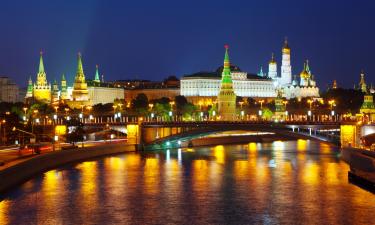Nagorno-Karabakh: 20,000 people killed, but no one is interested
One of the bloodiest and longest conflicts on the territory of the USSR started 30 years ago. On February 20, 1988, the extraordinary session of People's Deputies of the Nagorno Karabakh Autonomous Region appealed to the Supreme Soviet Councils of Armenian and Azerbaijani Soviet Socialist Republics to consider the issue of transferring the Nagorno-Karabakh Autonomous Oblast (Region) from Azerbaijan to Armenia. Thus began the armed Armenian-Azerbaijani conflict, which claimed the lives of about 20,000 people from 1988 to 1994.

In February 1988, Baku rejected the request from Stepanakert (Khankendi) to deliver the region to Armenia. Yerevan, on the contrary, supported the idea. The hostility of the two Soviet republics within the united USSR - Armenia and Azerbaijan - started. The Karabakh conflict triggered other interethnic conflicts between Georgia and Abkhazia, Ossetia and Ingushetia and the conflict in Transnistria. The myth about the "indestructible friendship of peoples" in the Soviet Union collapsed very quickly.
First armed clashes between Azerbaijanis and Armenians started in the fall of 1988, when mass expulsions of Azerbaijanis and Armenians from Armenia and Azerbaijan started. Some time later, armed Armenian detachments were formed in the Nagorno-Karabakh Autonomous Region. The fighters were struggling against OMON and Azerbaijani army servicemen. In May 1992, military operations moved outside the borders of Nagorno-Karabakh. Armenian troops occupied seven regions adjacent to the former NKAR: Kelbadjar, Lachin, Zangelan, Kubatly, Jebrail, Fizuli and Agdam.
In February 1988, Armenia accused Azerbaijan of the "genocide" of Sumgayit Armenians, where, according to the USSR Office of the Prosecutor General, 26 Armenians were killed. Yerevan claims, though, that at least a hundred people were killed. Azerbaijan, in turn, demands the international community should bring Armenia to account for the "genocide" of Azerbaijanis committed in February 1992, when hundreds of Azerbaijani civilians were killed as a result of attacks committed by Armenian armed formations.
In May 1994, with the mediation of Russia, Azerbaijan and Armenia signed a ceasefire agreement, and the acute phase of the armed conflict was frozen. From 1988 to 1994, at least 20,000 people were killed in the Armenian-Azerbaijani conflict. Presently, the ceasefire on the front line continues to stay in effect, but the two sides to the conflict do not exclude the resumption of hostilities. In April 2016, the fighting in the conflict zone resumed, but after a few days, the parties declared a truce. Nevertheless, the situation remains explosive: both Baku and Yerevan build up their military potential and prepare for war.
Neither Azerbaijan nor Armenia want to make concessions. Armenia says that the withdrawal of Armenian troops from Azerbaijani regions can be possible only after Azerbaijan recognises the independence of Nagorno-Karabakh. Azerbaijan demands the opposite: the discussion of the future status of Nagorno-Karabakh is possible only after the Armenian troops are pulled out.
Experts in Baku and Yerevan believe that both the United States and the European Union are interested in preserving the simmering conflict in order to use the Karabakh factor as a lever of pressure on both sides.
According to observers, the Minsk Group of the OSCE, created in 1992 for the peaceful settlement of this conflict, is to blame for the explosive situation in the conflict zone. Over the past 26 years, the Minsk Group has not been able to deploy a permanent OSCE monitoring mission in the region of the Armenian-Azerbaijani confrontation, as it was done in the Donbas. There are currently no mechanisms on the front line to monitor compliance with the Bishkek protocol on armistice, which has been in force since March 1994.
According to military experts, one needs to create a neutral zone several kilometers wide in order to maintain peace in the region before OSCE missions can be deployed there at the first stage. Afterwards, mixed peacekeeping forces from among the countries that do not border Armenia and Azerbaijan could be introduced into the sanitary zone.
At the third stage, it is necessary to begin full-scale negotiations with a view to sign a framework peace treaty between Armenia and Azerbaijan to encourage the parties to make compromises to resolve the conflict.
The most complicated question of the forthcoming settlement is the status of Nagorno-Karabakh. At present, even the government of Armenia does not recognise its independence, since this former autonomy is not a party to the talks. Yerevan openly states that the Armenian troops will leave seven regions of Azerbaijan adjacent to the former NKAR only after Baku recognises the independence of Nagorno-Karabakh.
Naturally, Ilham Aliyev will never agree to the recognition of Nagorno-Karabakh, because this would lead to a political crisis in Baku.
Thus, the process of negotiation on Karabakh has come to a deadlock. Russia, the European Union, the United States, whose attention is focused on Syria, Ukraine and North Korea, show little interest in the conflict between Armenia and Azerbaijan. The explosive situation in the Karabakh region will remain.
Aidyn Mehtiyev
Pravda.Ru
Read article on the Russian version of Pravda.Ru
Subscribe to Pravda.Ru Telegram channel, Facebook, RSS!





